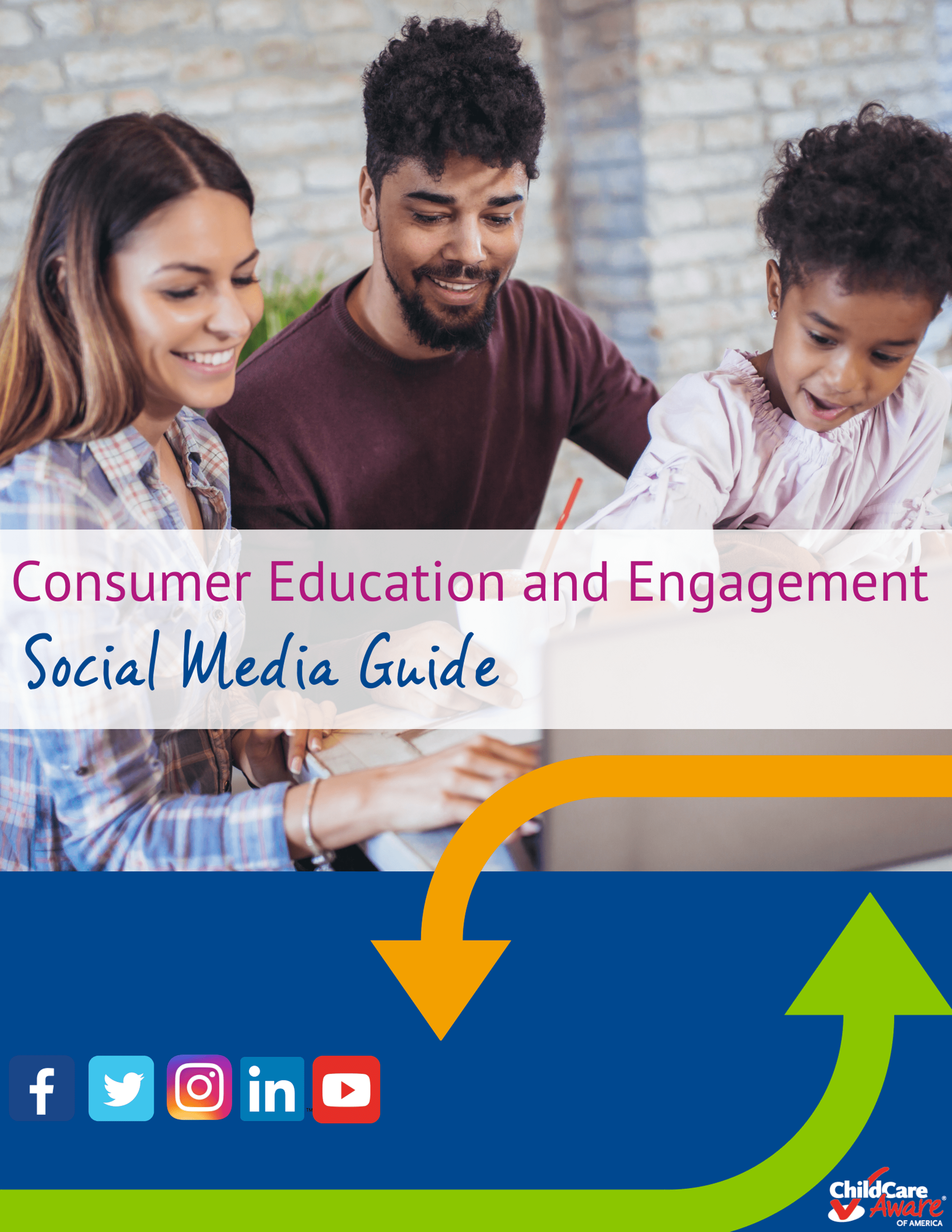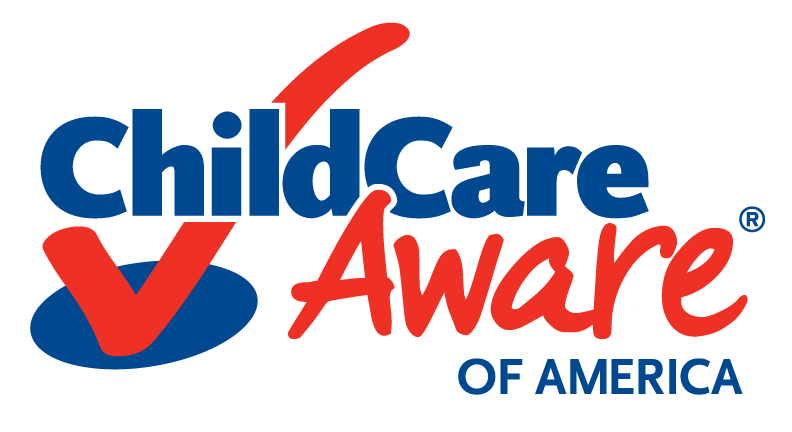Social media is used by families to initiate child care searches, read reviews and testimonials, and share information with peers though word-of-mouth. It’s also an excellent tool to cultivate and sustain two-way interactions between child care resource and referral (CCR&R) agencies and the families, early care and education professionals, and communities they serve. The Consumer Education and Engagement Social Media Guide will help CCR&Rs and other consumer education programs leverage social media to reach, inform, and engage with their target audiences.

Download PDF
TABLE OF CONTENTS
- Executive Summary
- Overview: Consumer Outreach, Education, and Engagement on Social Media
- Planning and Implementation
- Establishing Goals and Objectives
- Posting and Engaging
- Measuring Success
- Citation
- Appendix A
- Social Media Communications Strategy Worksheet
- Social Media Evaluation Worksheet
Executive Summary
Resoundingly, Child Care Aware® of America research indicates that families desire electronic access to information about child care that is up-to-date and easy to understand.Consequently, Child Care Resource and Referral (CCR&R) agencies and other consumer education programs must increase their capacity to meet the information needs of families across a variety of delivery platforms, while remaining responsive to families that desire individualized support. Digital outreach strategies complement traditional outreach and communication methods, but do not replace them. Not only are technology-based platforms a resource for families to initiate child care searches, but platforms such as email, websites, social media and text messaging can serve as a foundation to cultivate and sustain two-way interactions between CCR&Rs and families. Therefore, this guide advocates considering how traditional and digital outreach methods can be blended to reach a diverse array of audiences with information when they need it the most. Additionally, the guide focuses on consumer engagement and education strategies that will help your agency meaningfully connect with families through social media. The recommendations in this guide are derived from examination of best practices and guidance from marketing experts, and verified through a pilot process at two CCR&R locations. You can use the information in this document to:
- Expand and strengthen your agency’s existing consumer education activities and leverage social media as a dynamic tool for engaging family and community stakeholders;
- Plan and implement a social media strategy that incorporates outreach, engagement and consumer education approaches;
- Establish goals for your social media presence and activities;
- Determine the platforms that are most likely to reach your desired audiences;
- Discover tips for posting on social media, such as how to craft a post and the best times to post; and
- Create an evaluation process that includes the collection, analysis and use of data to help determine whether your activities are successful.
Overview: Consumer Outreach, Education, and Engagement on Social Media
Parents are heavy social media users, especially mothers. In fact, 75% of parents who are online consider social media a tool for accessing parenting advice and information (Pew Research Center, 2015) and nearly 70% of families with young children report using it during child care searches (Child Care Aware® of America, In press). Families use social media to conduct general searches, extend word-of-mouth, find reviews/testimonials and engage with social networks related to early care and education topics (Child Care Aware® of America, In press). This guide serves as a resource for child care resource and referral agencies (CCR&Rs) and similar groups with a desire to meet families in the online spaces they occupy.
Digital outreach through social media has become an effective way to increase reach, foster engagement and expand access to trustworthy, early care and education messages. Social media and other emerging communication technologies can connect a diverse array of voices (families, early care and education professionals, and community members) to:
- Foster family and community engagement around early care and education topics;
- Empower families to make informed decisions for their children;
- Increase information available to inform quality child care choices;
- Leverage networks with community partners to maximize information distribution through word of mouth;
- Expand reach to include broader, more diverse audiences; and
- Personalize and reinforce early childhood messages tailored to target audiences
Common terms used throughout this guide include consumer outreach, education and engagement. Each is briefly described below and strategies and activities related to each are identified and infused throughout this guide.
Consumer Outreach involves activities that intentionally seek out families, increase awareness, and ensure child care information is accessible to all families in the spaces and places they most frequent. Outreach is particularly important to populations that have low incomes or are otherwise disadvantaged. Social media unlocks new opportunities to connect with families, such as through word-of-mouth from their online social networks of family, friends, and affiliations (e.g., churches, schools, and community organizations). It also can be used to overcome barriers encountered with traditional forms of outreach. For example, there are no office hours on social media, allowing families to leave messages and ask questions anytime.
Consumer Education refers to providing families and communities with child care information that empowers and affirms parental choices, as well as builds on their knowledge about what is best for their family and their child. Consumer education often involves a one-directional flow of information from the professional to the family. Social media outlets allow agencies to share generalized child care content with larger, more diverse audiences of families and consumers than more traditional delivery methods.
Consumer Engagement focuses on more than providing information to families and communities. It refers to a collaborative process that requires two-way, relationship-based interactions between professionals and families to build on each other’s knowledge and capabilities. Many opportunities to engage with families are available on social media. For example, social media can be used to provide encouraging comments, share ideas and host live events such as Facebook Live, Twitterstorms, and live chats to engage in discussions and answer questions.
This guide was informed by emerging research, stakeholder feedback, and insights gleaned during the pilot of the Consumer Education and Engagement SMART Suite. It tackles the following elements of a social media outreach strategy:
- Planning and Implementation
- Establishing Goals and Objectives
- Posting and Engaging
- Measuring Success
Download PDF


